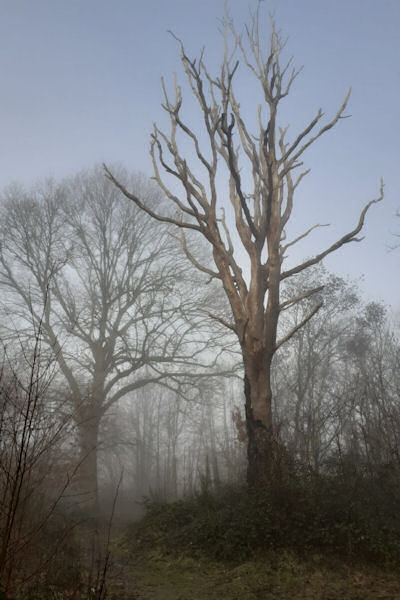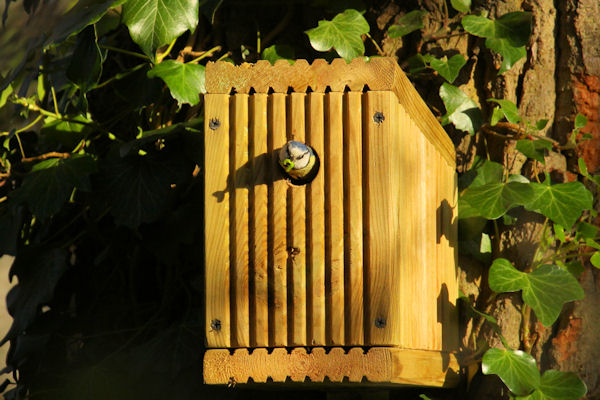The Burnt Oak
The oak tree that stood over the small clearing towards the east end of the wood might have been around 120-140 years old when it died. It is not clear whether its death was caused by the fire at its base, but the ugly scar provokes the presumption.
Before Bellway and Redrow came to Otham, quadbikers frequented that end of the wood because it was far from any houses whose occupants might complain. Litter, debris from crashes and evidence of other fires all point to a casual approach to environmental mindfulness.
Even in death the tree stood tall. In its prime, it would have been a Sessile Oak, Quercus petraea, one of the two indigenous oaks of the British Isles. In botany, Sessile means "connected without a stalk". It can be separated from the English Oak because its acorn cups do not have a stalk. Being a cussid lot, taxonomists chose that feature to characterise it. Sessile Oak leaves do have a stalk, but the English Oak's do not. So perhaps both species would qualify as Sessile?
The second part of the scientific name, petraea, can be traced back through many ancient languages to mean rock (as in St. Peter) and is interpreted as strong and resolute.
As it stood, there was a lot of soft, rotting wood that posed a risk of falling and a danger to anyone passing below. In deference to the tree's resolute nature, the committee decided against felling it in favour of trimming it back to a state in which it no longer posed the risk.
It has been a feature of the skyline for as long as most of us have known the wood and it has provided a habitat and a platform for many of the residents of the wood and its visitors.











Comments
Post a Comment